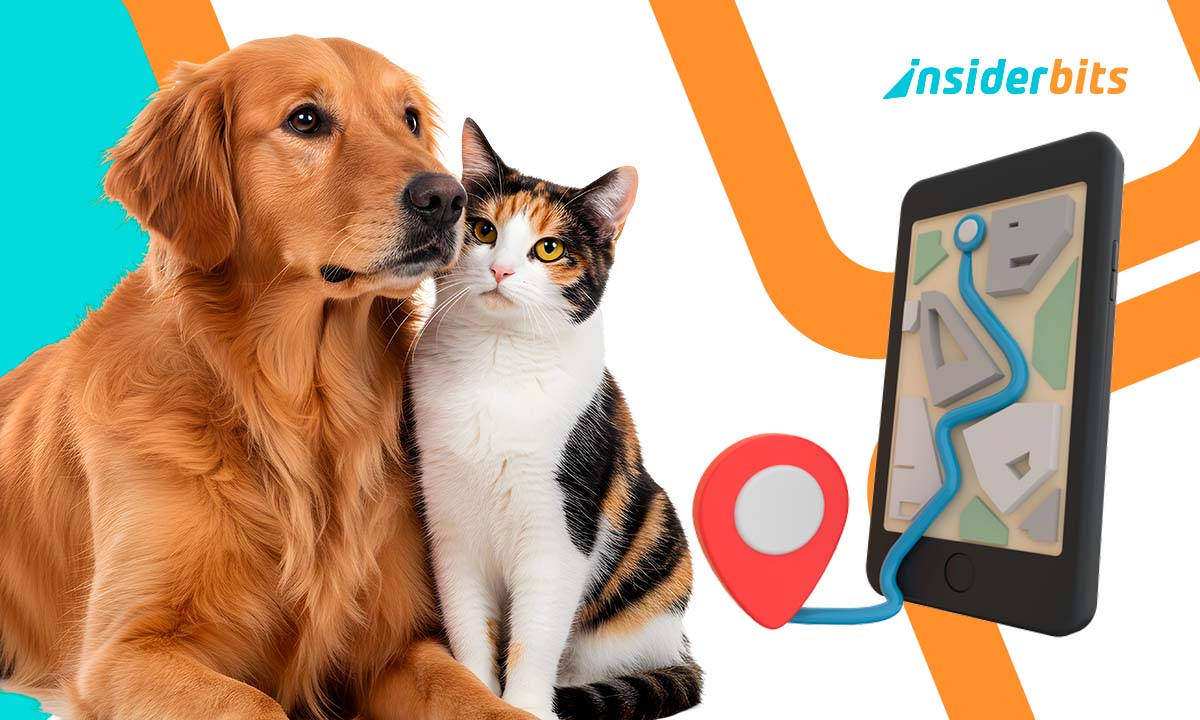We’ve all been there—your dog bolts after a squirrel like it’s his life’s mission, or your cat pulls a magician act and vanishes into thin air. Panic sets in, you’re screaming their name like a maniac, and suddenly, the neighborhood thinks you’ve lost your mind. Enter GPS pet trackers: the tiny devices that turn “I’ll never see him again” into “Oh, she’s just napping under Mrs. Johnson’s porch”.
These gadgets aren’t just for the overly paranoid pet parent (though, let’s be real, we all are). They’re legit lifesavers that ping your phone with your pet’s exact location, track their every move, and even alert you if they’ve wandered outside their “safe zone”. No more posters, no more desperate door-knocking. Just open a “find lost pets” app and breathe a sigh of relief.
- Join The Fitness With Pets Training At Home!
- Best Free Offline GPS Apps!
- Best Free iOS GPS Apps for Offline Navigation
How to find lost pets using GPS tracker apps
First, let’s clear something up: not all pet trackers are created equal. Some are sleek, high-tech marvels; others are glorified key finders that fail when you need them most.
Here’s how the good ones actually work:
- Real-time GPS tracking: pinpoints your pet’s location down to a few feet, updating every few seconds (so no, your dog can’t outrun technology);
- Safe zone alerts: get a notification the second your escape artist leaves the yard (because apparently, fences are just suggestions);
- Activity monitoring: because if your lazy cat suddenly starts sprinting, you’ll know something’s up;
- Community alerts: some apps blast a lost pet notice to other users nearby—AKA turning strangers into your personal search party.
As 7 Hills Vet highlights, these trackers are especially clutch for pets with a history of “great escapes”.
Best real-time tracking features for dogs and cats
Your pet’s idea of “adventure” is either bolting after a squirrel like it’s the last meal on Earth or disappearing into the neighbor’s garage like a furry little ninja.
That’s where GPS trackers come in, turning “Where the hell is my dog?!” into a quick glance at your phone. But not all trackers are created equal.
Some are sleek, hyper-accurate lifelines; others might as well be digital wishful thinking. Here’s what actually works when your pet decides to go rogue.
Tractive GPS: the gold standard
The Tractive tracker is like an Apple AirTag on steroids. It’s waterproof, works worldwide, and even has a “find lost pets mode” that updates location every 2-3 seconds.
Perfect for dogs who think they’re marathon runners and cats who fancy themselves wilderness explorers.
Key perks:
- Unlimited range (bye-bye, Bluetooth limits);
- Live tracking with historical route replay (so you can see exactly where Mr. Whiskors has been “hunting”);
- Activity insights (because yes, your dog is lazier than average);
- It’s available for both iOS and Android.
Whistle: the health-conscious choice
Whistle’s tracker does more than just locate your pet—it monitors their health, too. Scratching too much? Sleeping more than usual? It’ll flag potential issues before you even notice.
Why pet parents love it:
- Tracks fitness and sleep patterns (for pets who take their wellness seriously);
- Long battery life (up to 20 days, because charging it daily would be tragic);
- Escape alerts that actually work (unlike your backyard fence).
- It’s also available for Android and iOS.
4.5/5
For a deeper dive, Robot My Life’s guide breaks down which tracker suits your pet’s… adventurous tendencies.
Setup guide: how to activate and pair trackers
If you’re the type who struggles to pair Bluetooth headphones, setting up a pet tracker might feel like defusing a bomb.
But fear not, because unlike your pet’s ability to evaporate, these instructions won’t abandon you. Here’s how to get that fancy GPS tracker working
- Charge it first (because nothing’s worse than a dead battery mid-escape);
- Sync with the app (usually involves holding buttons until it beeps mysteriously);
- Attach to collar securely (duct tape is not the answer);
- Set up safe zones (so you’re alerted before your pet becomes a neighborhood legend).
Do a test run by letting your pet roam slightly out of bounds. If you don’t get an alert, revisit the steps.
Lost pet alerts and community assistance
Some apps, like Tractive, have built-in networks where users can report sightings. Imagine a neighborhood watch, but for finding Fluffy instead of catching burglars.
- Whistle’s “Find My Pet” lets you share lost pet alerts on social media directly from the app;
- Tractive’s community alerts notify other users in the area to keep an eye out;
- Vet-linked databases (like some Sylvan Vet services) can help reunite microchipped pets faster.
Bluetooth vs. GPS: which is better?
- Bluetooth trackers (like Tile) are cheaper, but only work within ~200 feet;
- GPS trackers (like Tractive) cost more but have unlimited range—ideal for pets with wanderlust.
Final thoughts
Bottom line: if your pet’s an escape artist, GPS is worth every penny. Otherwise, you’re just betting they won’t go far. (Spoiler: They will.)
For more pet-tech hacks, check out our guide on saving on vet bills—because keeping them safe is one thing; keeping them affordable is another battle entirely.




